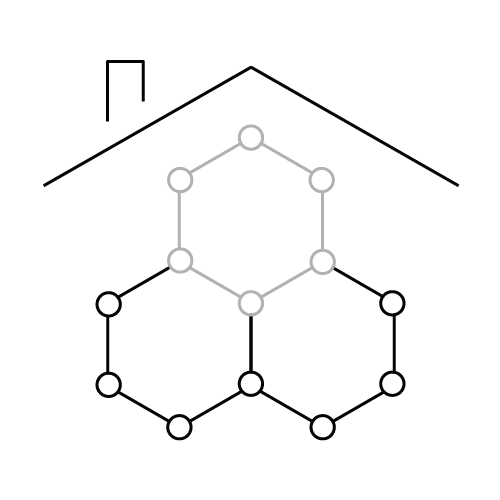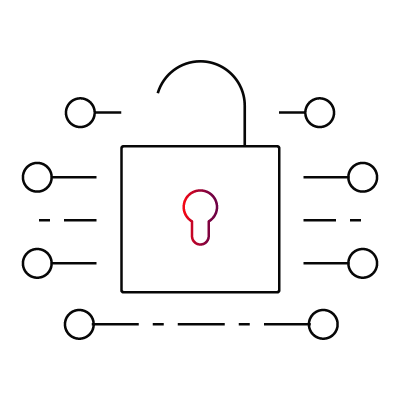10G Technology
CableLabs® Micronets
As more smart devices are added to home and business networks, an easy-to-use platform to manage these devices and keep information secure is imperative. Introducing CableLabs Micronets, a next-generation on-premises network management system providing enterprise-level security that’s highly adaptive and effortless. No matter how complex the network, Micronets has it covered.
-
Micronets Webinar - February 2019
-
Intro: What is Micronets
-
Animation: What is CableLabs Micronets
-
CTA: What is Micronets
SDN: Micronets' Security Guard
SDN establishes the foundation for a new security experience through three basic capabilities: network segmentation, secure network extension and advanced security services.
-
Network Segmentation
-
Secure Network Extension
-
Advanced Security Services
The Micronets platform redesigns home and business networks into multiple dynamically managed networks or micronets. By organizing all the networked devices into multiple micronets, the system can effectively isolate any security threats and prevent them from damaging the entire network. For example, if a baby monitor gets hacked because of an unsecure port, the attackers will not be able to get easy access to the devices in other Micronets, such as a home security system or family computer.
The future of IoT is moving toward a plethora of personal sensors, actuators and processors that maintain constant connection to a third party. For example, there are glucose testers that send results to a family doctor or a hospital for round-the-clock monitoring. Micronets provides application interfaces to trusted third parties that simplifies and protects the device and user. Once the customer takes the device home, it automatically joins his or her home network (with permission, of course) and securely connects to the third-party provider.
Security threats continuously evolve as new vulnerabilities and new hacking tools are discovered. A security solution that worked last year might not be as effective today. By leveraging adaptable security technologies, such as device fingerprinting, artificial intelligence (AI), machine learning–based anomaly detection, Micronets protects the user’s network by isolating compromised devices. Micronets also leverages stronger device credentials to ensure that devices are authenticated as and when they connect to the network.
-
Network Segmentation
The Micronets platform redesigns home and business networks into multiple dynamically managed networks or micronets. By organizing all the networked devices into multiple micronets, the system can effectively isolate any security threats and prevent them from damaging the entire network. For example, if a baby monitor gets hacked because of an unsecure port, the attackers will not be able to get easy access to the devices in other Micronets, such as a home security system or family computer.
-
Secure Network Extension
The future of IoT is moving toward a plethora of personal sensors, actuators and processors that maintain constant connection to a third party. For example, there are glucose testers that send results to a family doctor or a hospital for round-the-clock monitoring. Micronets provides application interfaces to trusted third parties that simplifies and protects the device and user. Once the customer takes the device home, it automatically joins his or her home network (with permission, of course) and securely connects to the third-party provider.
-
Advanced Security Services
Security threats continuously evolve as new vulnerabilities and new hacking tools are discovered. A security solution that worked last year might not be as effective today. By leveraging adaptable security technologies, such as device fingerprinting, artificial intelligence (AI), machine learning–based anomaly detection, Micronets protects the user’s network by isolating compromised devices. Micronets also leverages stronger device credentials to ensure that devices are authenticated as and when they connect to the network.

The CableLabs Micronets Whitepaper (PDF)
Download PDFFAQs
- How did Micronets evolve?
-
There are many different ecosystems and few consistent standards for the various kinds of devices and services being used in homes and businesses today. We realized that a platform was needed that evolves the traditional consumer and business gateway into an advanced and agile system that contains security breaches and provides adaptive security measures as threats evolve.
- How does Micronets work?
-
The Micronets platform redesigns a home network into multiple dynamically managed networks or micronets. Each micronet is a trust domain that asserts rules on how devices interconnect and access the internet. Furthermore, Micronets leverages a cloud-based micro-services architecture that integrates intelligent services such as artificial intelligence (AI) based device fingerprinting and IoT security. It also allows straightforward onboarding of new devices as they are added to the network.
- How does Micronets benefit consumers?
-
A core pillar of the Micronets platform is ease of use for consumers and business owners. It allows them to connect the devices of their choice and helps them organize and manage their devices with built-in security capabilities. This results in a dynamic and self-organizing system. Furthermore, the Micronets platform leverages APIs to allow machine learning and neural network technologies to dynamically deliver advanced security features where necessary, all while giving the customer complete control.
- How is CableLabs and the industry cooperating to develop and deploy Micronets?
-
CableLabs is driving the effort to advance cable-based security technologies and create better Internet of Things (IoT) standards across the industry. We’re working with our industry partners and members to bring this technology to the customers. We’re also actively contributing to various standards organizations, such as Wi-Fi Alliance and the Internet Engineering Task Force (IETF), while also supporting government efforts under the National Cybersecurity Center of Excellence (NCCoE) to accelerate the adoption of this technology.
The Rollout: Getting Micronets in Homes and Business
- White Paper: This white paper lays out the vision and architecture of Micronets in greater detail.
- Code: We are releasing the reference code, currently under development, to the open source community in the coming months.
- Our Members and Vendors: We are developing and publishing specifications for standardized APIs for advanced security services based on machine learning and device fingerprinting in collaboration with our members and vendors.
- Where can I find Micronets resources?
-
Read the detailed technical documentation and check out the source code regarding the Micronets platform.
Work with us on implementation by contacting Darshak Thakore at d.thakore@cablelabs.com.








